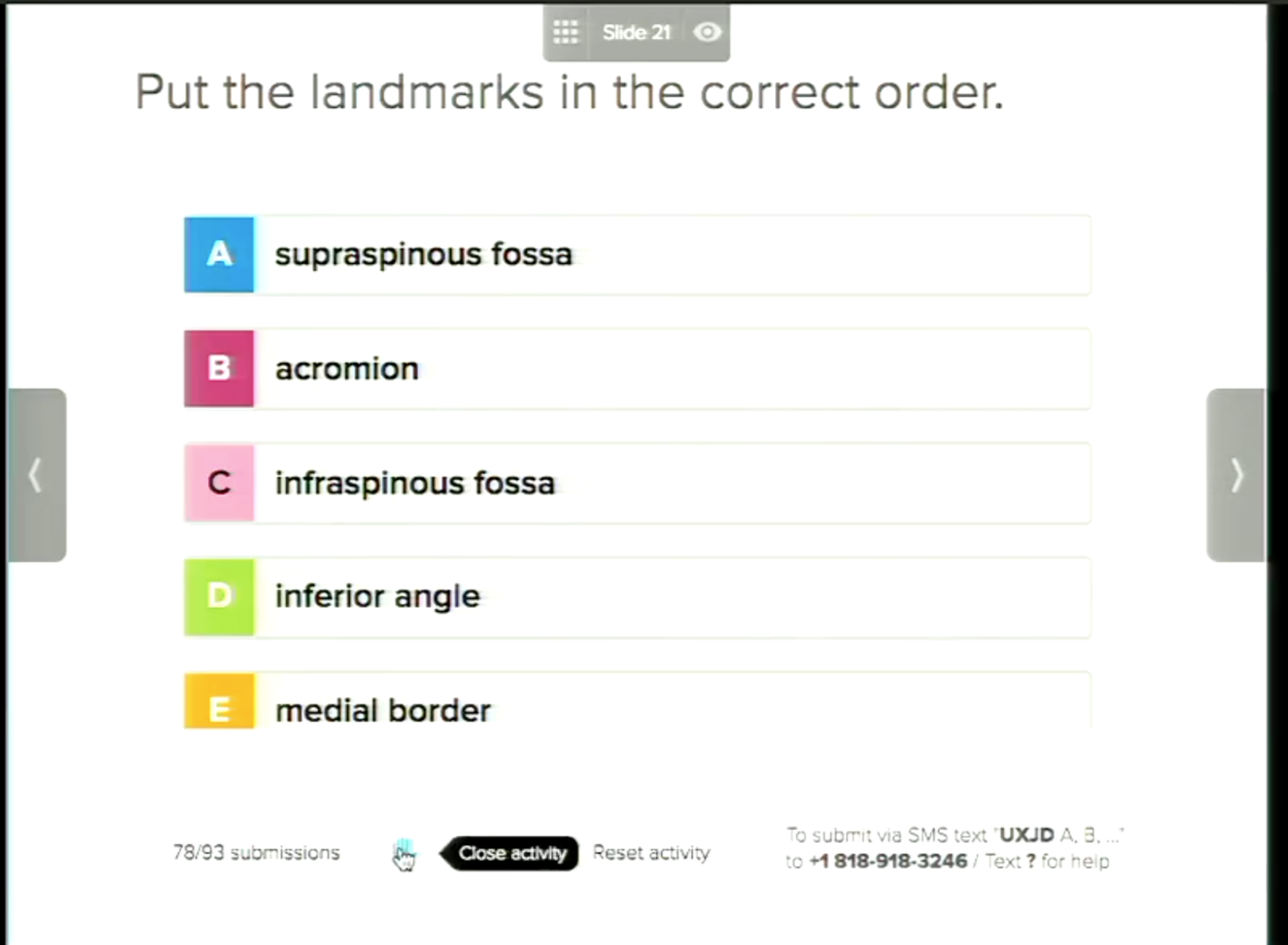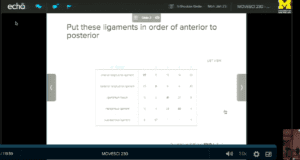Research Concludes Image Based Questions and Active Learning Key to Student Success

They say that a picture is worth a thousand words. For Melissa Gross, Ph.D., Associate Professor at the University of Michigan, School of Kinesiology, a picture or, more accurately, images displaying anatomical structures, combined with active learning exercises, improves student learning and exam scores. Such were the findings of a research article she and her colleagues wrote and published in February 2017 in Anatomical Sciences Education, titled, “Effects of Image-Based and Text-Based Active Learning Exercises on Student Examination Performance in a Musculoskeletal Anatomy Course.”
“The combination of active learning exercises and image-based questions in Echo360 helps students better understand anatomical structures and their corresponding function,” says Dr. Gross. “And, when we accounted for factors such as incoming GPA, we found that students benefited more when presented with active learning exercises that included image-based questions versus text-based questions.”
Making a Shift to Active Learning – Less Information Overload, More Classroom Activities
In response to growing research that supports the use of active learning in STEM courses, (Freeman et al 2014), Dr. Gross set out to rethink how she taught her courses.
“In the past, I thought it was my job as an anatomy instructor to provide as much information as possible about
musculoskeletal anatomy,” she says. “To do that, I would load up my slides with content. I thought a good lecture was one that contained LOTS of interesting slides. However, after seeing evidence supporting active learning and talking with other colleagues at the University of Michigan who used active learning methods, I started to include more student-centered activities in my lectures.
Now, I think my job as an anatomy instructor is to use less class time for presenting information. Today, with every iteration of my course, every semester, I try to take presentation content out of class time, lecture less, and create more activities and opportunities for students to work with the material,” Gross adds.
Using Analytics to Optimize Classroom Activities
Dr. Gross uses Echo360 analytics to determine the effectiveness of the active learning activities she creates. She looks at how many students get a question right and if too many students get the right answer, she drops the question and activity. The inverse is also true. If only a few students correctly answer a question, she knows she must look for ways to clear up the misconceptions.
“The first question I ask myself is, ‘was this a good question?’ I don’t need to waste time asking questions if students already know the answer. I am looking for that mid-range to help me understand which topics my students need to work on with guidance during our class time. More and more now, I quickly present information and shift my class time to guided inquiry to see if students can apply the knowledge.”
Dr. Gross also embraces student mistakes and uses them as learning moments.
“It’s wonderful when students mess up,” she says. “Learning actually happens in that messy, not-so-pretty place where students make mistakes!”
Structuring Class Time to Discover What Students Don’t Know
Dr. Gross’s classroom presentations are automatically recorded using Echo360 and students use the recordings when reviewing for exams. An average class includes about 12-14 image-based questions and she embeds those questions throughout her presentation for students to respond to. Class time is structured to probe and discover what her students know or don’t know.
“I will present the question and wait until about 75 percent of the students have responded in Echo360. Then I close the question and show them their answers and that’s when the fun begins. My favorite experience is when it is an image question and the student responses are all over the image. That usually gets them laughing,” she says. “When this happens, we talk about what the distribution of their answers suggests to me. It’s a total back and forth. I also ask them to ‘consult with the “expert” sitting next to you’ and encourage students to collaborate and engage with each other.”
Student participation counts in Dr. Gross’s class and her research underscores its importance. Students receive a point by participating in at least 75 percent of the classroom activities. However, she emphasizes to students that participation is more important than getting the answers correct. Dr. Gross believes that such a “low-stakes” testing approach makes the classroom a less stressful environment. After each class, student presentation activity gets uploaded into the gradebook so her students can receive immediate feedback.

“Our research revealed that student participation in the active learning exercises with the image-based questions was associated with an improvement in test scores,” says Dr. Gross. “Because Echo360 analytics allows me to see the level of student participation, I can also give them better guidance when they come to my office after the first exam. I can point out to them whether they are engaged and actively participating. The numbers don’t lie,” she says.
“It’s Not About My Teaching, It’s About My Student’s Learning”
For Dr. Gross, this approach has made teaching more fun and rewarding. And when students actively participate, it creates a more stimulating environment for them.
“I find myself saying more and more that it is so much more fun to teach this way. It’s gratifying to spend your time in discovery with your students. Being with them at their moment of learning is more rewarding than just giving a lecture. I don’t think that message gets said much. You have a happier group of students and that is a much better place to be.”
Dr. Gross concludes by saying, “Using Echo360 to create an active, engaging classroom has changed everything for me. Teaching for me is now all about my student’s learning. I’m engaged in that process with them. I’m working to help them learn as opposed to focusing on me and a presentation.”
View more of Dr. Gross’s class and learn how to incorporate active learning into your classroom.
Learn more about Echo360.


